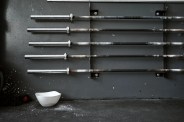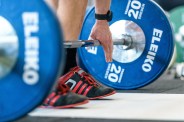Picture this: You’re lining up to deadlift a new PR. You’ve done all the accessory work and put the time in to make this workout milestone. Your outfit, your music, your mindset, all locked in for this successful lift.
You grip the bar, begin to pull, and as you slowly bring the weight to your knees, you feel the bar slipping from your fingers. As you try and regain control, the knurling leaves your fingertips, falling back down to Earth, taking your muscle-building dreams along with it.
While we all dread this lifting letdown, it’s more common than you think, especially when you muscle up to higher totals. Your grip can be your weakest link in the kinetic chain, leading to missed lifts and less progression in your training. To strengthen your connection to the barbell, you can utilize a number of tactics to make sure you stand tall with a completed rep rather than sink in defeat. One such method is the hook grip.
As an alternative way to grab hold of the barbell, a hook grip can be an effective tool in your training arsenal. But what is this grip method and why isn’t it as common as other tactics like overhand or mixed grip? Here’s the skinny on this effective grip technique, when it’s most useful and how employing it can give your next deadlift a little more bite.
What Is a Hook Grip?
The “hook” portion of the hook grip name comes from where your thumb is placed. Rather than resting over your fingers — which is what you’d see in a traditional overhand grip — your thumb wraps underneath the bar and is pinned in place with your index or middle finger.
This unique thumb placement serves two purposes, in theory. For one, it creates an additional platform for the barbell during heavy pulls. Instead of relying on just your fingers to grasp and control the barbell, your thumb comes underneath in the opposite direction, giving multidirectional security to combat barbell spin.








